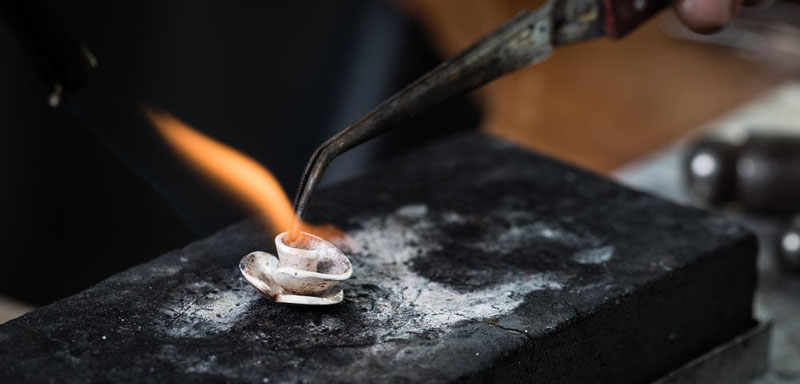Annealing is a metal heat treatment process that is common in the processing of metal mechanical parts. It changes the physical and sometimes chemical properties of the material to improve ductility and reduce hardness, making it easier to machine. This article focuses on the basic concept, purpose, significance, different types of annealing, advantages, disadvantages, applications, etc. of annealing.
What Is Annealing?
Annealing process is one of the commonly used heat treatment processes, mainly used to increase the ductility of materials and reduce their hardness. This change in hardness and ductility is the result of a decrease in dislocations in the crystal structure of annealed materials.
Annealing is usually carried out after the material has undergone a hardening or cold working process to prevent brittle failure or make it more ductile in subsequent operations.
Why Is Metal Annealed?
As mentioned above, annealing is used to reduce hardness and increase ductility. It is important to change these mechanical properties through annealing for many reasons:
Annealing improves the formability of the material. Hard and brittle materials are difficult to bend or press without damaging the material. Annealing eliminates this risk.
Annealing can also improve machinability. Extremely brittle materials can cause excessive tool wear. Reducing the hardness of the material through annealing can reduce the wear of the tools used.
Annealing to remove residual stress. Residual stress can lead to cracks and other mechanical complications, and it is usually best to eliminate them as much as possible.
What Metals Can Be Annealed?
In order to perform the annealing process, materials that can be modified through heat treatment must be used. There are many types of steel and cast iron for example. Some types of aluminum, copper, brass, and other materials can also respond to the annealing process.
The Annealing Process
Annealing is carried out in three stages – recovery stage, recrystallization stage, and grain growth stage. These tasks are as follows:
- Recovery phase
This stage involves using a furnace or other heating equipment to raise the temperature of the material to the extent necessary to eliminate internal stress.
- Recrystallization stage
Heating the material above its recrystallization temperature but below its melting point will result in the formation of new grains without any residual stress.
- Grain growth stage
Cooling the material at a specific rate can lead to the formation of new grains. Afterwards, the materials will become more feasible. Subsequent operations to change mechanical properties can be carried out after annealing.

Advantages Of Annealing
The main advantage of annealing is how it improves the machinability of the material, increases toughness, reduces hardness, and increases the ductility and machinability of the metal.
The heating and cooling processes also reduce the brittleness of metals while enhancing their magnetism and conductivity.
Disadvantages Of Annealing
The main drawback of annealing is that it may be a time-consuming process, depending on the material to be annealed. Materials with high temperature requirements may take a long time to fully cool, especially if they are Free cooling in an annealing furnace.
Industrial Uses Of Annealed Metal
Many common industrial processes today require or are enhanced by the use of annealed steel and annealed metals. For example, in order to reduce welding residual stress, annealing treatment is usually performed on welded structures.
Annealing can also strengthen metals that have overheated through high-strength processing. When the metal wire is pulled finer, stress is generated in the grain, therefore, new metal wires usually require annealing treatment. In addition, the process of manufacturing metal plates produces parts with high hardness, so the plates are usually annealed to restore their durability.
What’s the difference between annealing and tempering?
The difference between annealing and tempering can be attributed to how it is handled. Annealing involves heating steel to a specified temperature and then cooling it at a very slow and controlled rate, while tempering involves heating the metal to a precise temperature below the critical point, usually in air, vacuum, or inert atmosphere.
Annealing
Annealing involves heating the steel to a specified temperature and then cooling it at a very slow and controlled rate.
Annealing is typically used to:
Soften metal for cold working
Improve processability
Enhanced conductivity
Annealing can also restore ductility. During cold working, the metal will harden to the extent that any further processing will lead to cracking. By pre annealing the metal, cold working can be carried out without any risk of cracking, as annealing releases mechanical stress generated during machining or grinding.
Tempering
Tempering is used to increase the toughness of ferroalloys, especially steel. Untempered steel is very hard, but it is too brittle for most applications. Tempering is usually carried out after hardening to reduce excess hardness.
Tempering is used to change:
hardness
Ductility
toughness
power
Structural stability
Tempering involves heating the metal to a precise temperature below the critical point, usually in air, vacuum, or inert atmosphere.


